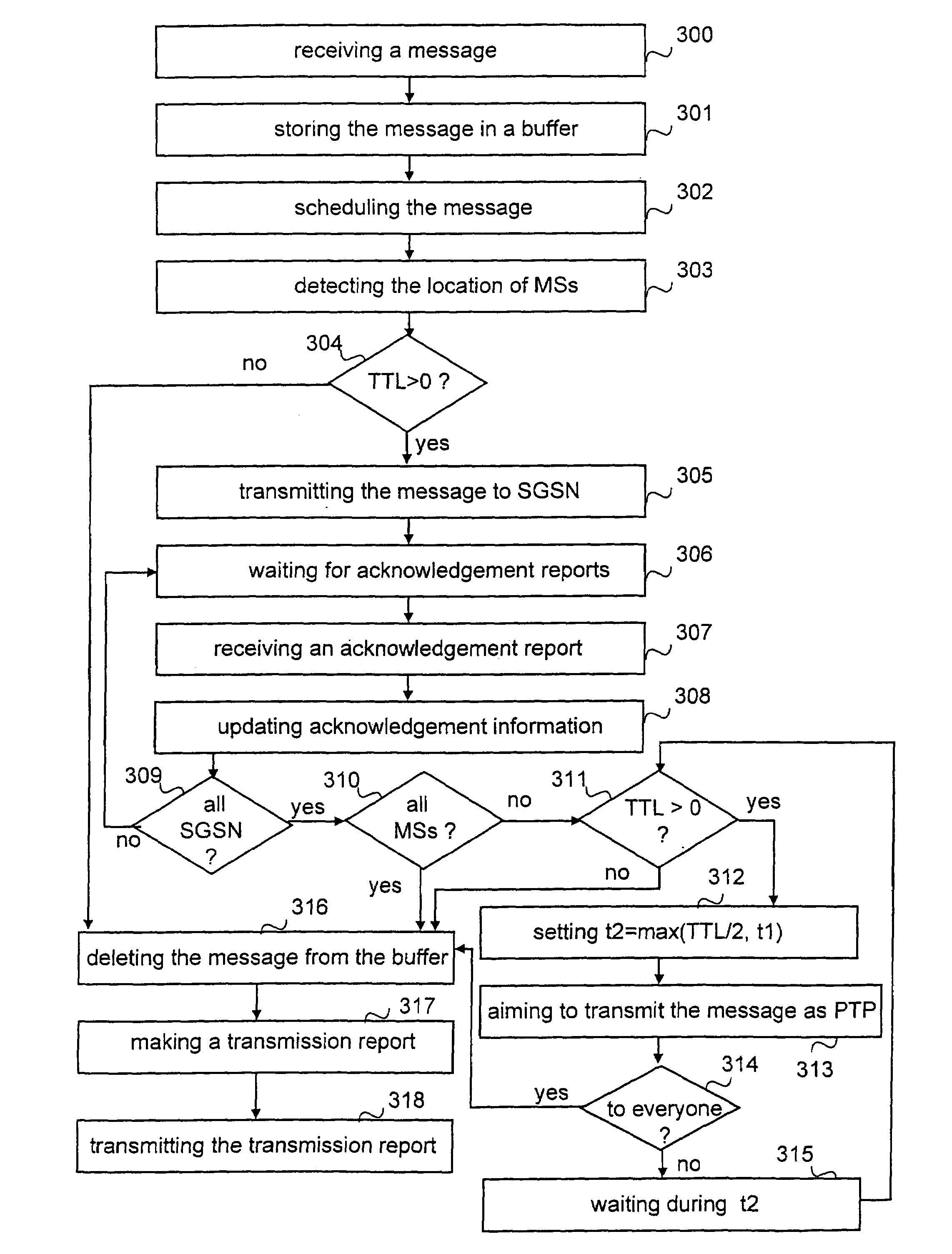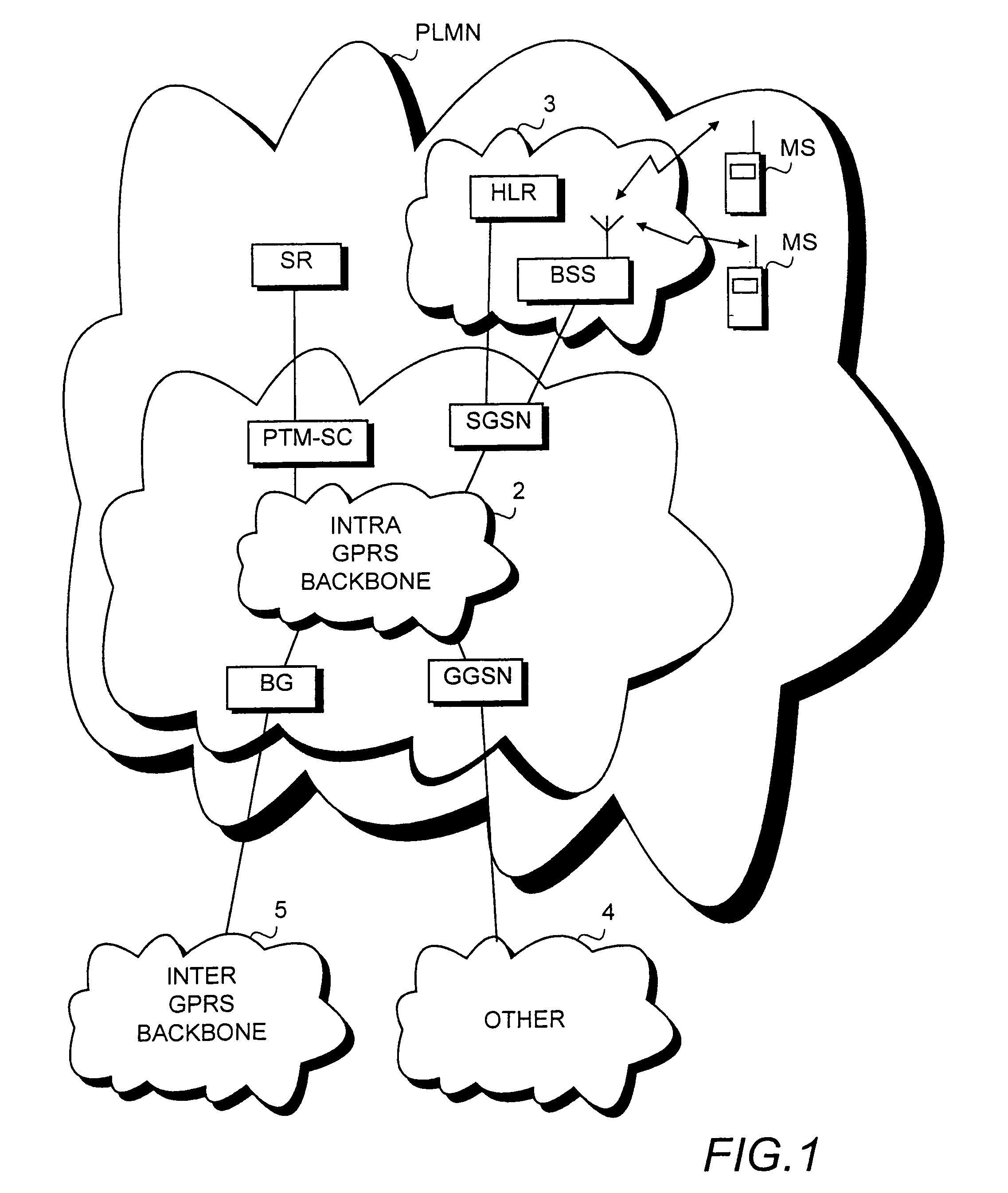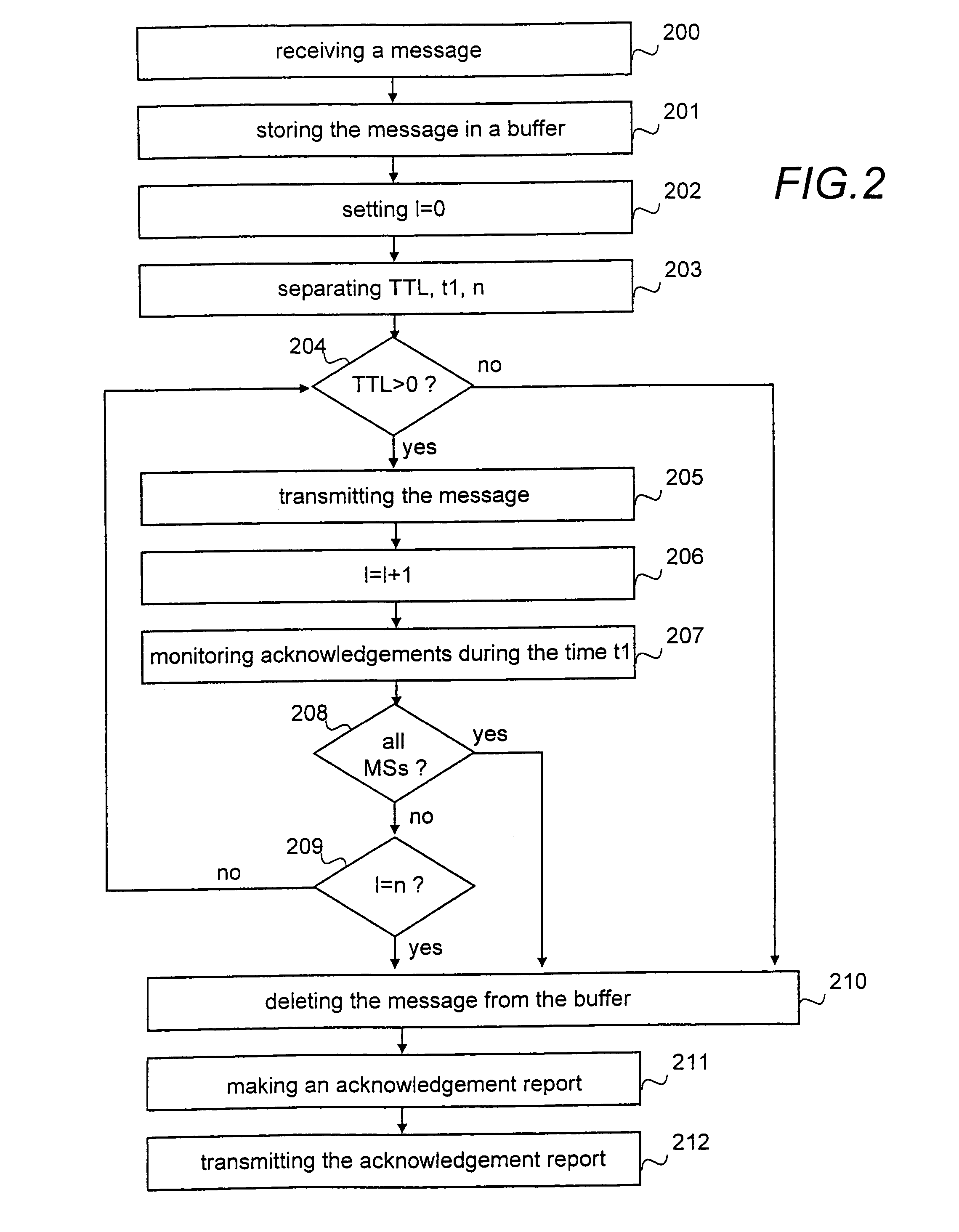Method, system and a network element for controlling point-to-multipoint transmission in a mobile communication system
a mobile communication system and point-to-multipoint technology, applied in the field of point-to-multipoint transmission in the mobile communication system, can solve the problems of unreliable, unencrypted and unreliable ptm multicast, and only being able to transmit point-to-multipoint messages, so as to save network resources, reduce network loading, and save network from unnecessary loading
- Summary
- Abstract
- Description
- Claims
- Application Information
AI Technical Summary
Benefits of technology
Problems solved by technology
Method used
Image
Examples
Embodiment Construction
[0023]In the following, the preferred embodiments of the invention will be described by means of GPRS packet radio networks yet without restricting the invention to such a specific packet radio system. The invention is applicable to all mobile communication systems in which point-to-multipoint transmissions are possible, e.g. to the third-generation mobile communication systems UMTS (Universal Mobile Telecommunication System) and IMT-2000 (International Mobile Telecommunication 2000) which are under development. It is to be noticed that the packet radio network only provides a physical connection between the PTM service centre and the service recipient, and the exact operation and structure of the network have no substantial meaning for the invention. The specifications of mobile communication systems in general and of the GPRS system in particular evolve fast. Various functionalities of the network elements may change. Therefore, all terms and expressions should be interpreted as w...
PUM
 Login to View More
Login to View More Abstract
Description
Claims
Application Information
 Login to View More
Login to View More - R&D
- Intellectual Property
- Life Sciences
- Materials
- Tech Scout
- Unparalleled Data Quality
- Higher Quality Content
- 60% Fewer Hallucinations
Browse by: Latest US Patents, China's latest patents, Technical Efficacy Thesaurus, Application Domain, Technology Topic, Popular Technical Reports.
© 2025 PatSnap. All rights reserved.Legal|Privacy policy|Modern Slavery Act Transparency Statement|Sitemap|About US| Contact US: help@patsnap.com



